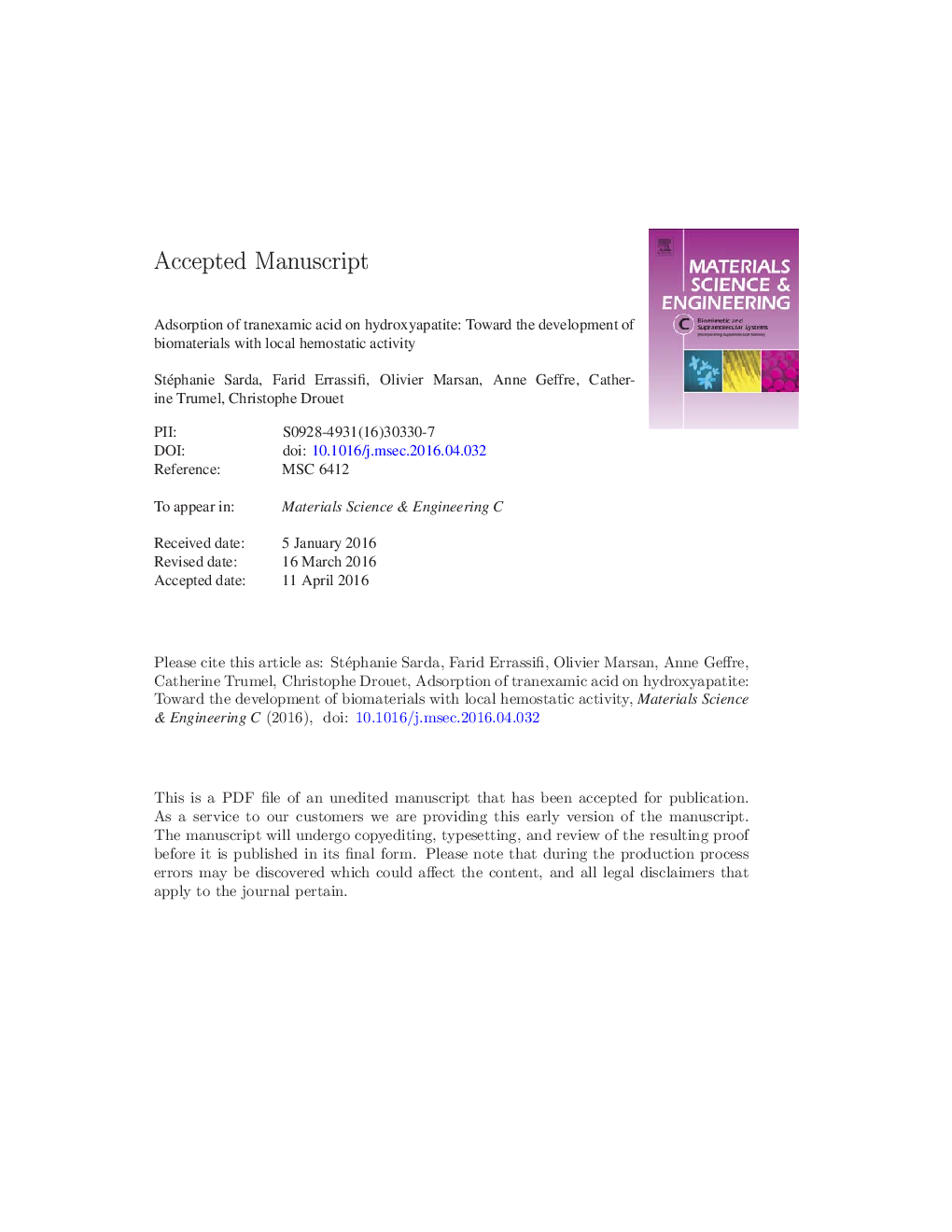| Article ID | Journal | Published Year | Pages | File Type |
|---|---|---|---|---|
| 7866861 | Materials Science and Engineering: C | 2016 | 20 Pages |
Abstract
No other phase was observed by X-ray diffraction or transmission electron microscopy, and no apparent change in crystal size was detected. The presence of TAX on the powders was lightly detected on Raman spectra after adsorption. The adsorption data could be fitted with a Langmuir-Freundlich equation, suggesting a strong interaction between adsorbed molecules and the formation of multilayers. The concentration of calcium and phosphate ions in solution remained low and stable during the adsorption process, thus ion exchange during the adsorption process could be ruled out. The release of TAX was fast during the first hours and was governed by a complex process that likely involved both diffusion and dissolution of HA. Preliminary aPTT (activated partial thromboplastin time) hemostasis tests offered promising results for the development of osteoconductive apatitic biomaterials with intrinsic hemostatic properties, whether for dental or orthopedic applications.
Related Topics
Physical Sciences and Engineering
Materials Science
Biomaterials
Authors
Stéphanie Sarda, Farid Errassifi, Olivier Marsan, Anne Geffre, Catherine Trumel, Christophe Drouet,
